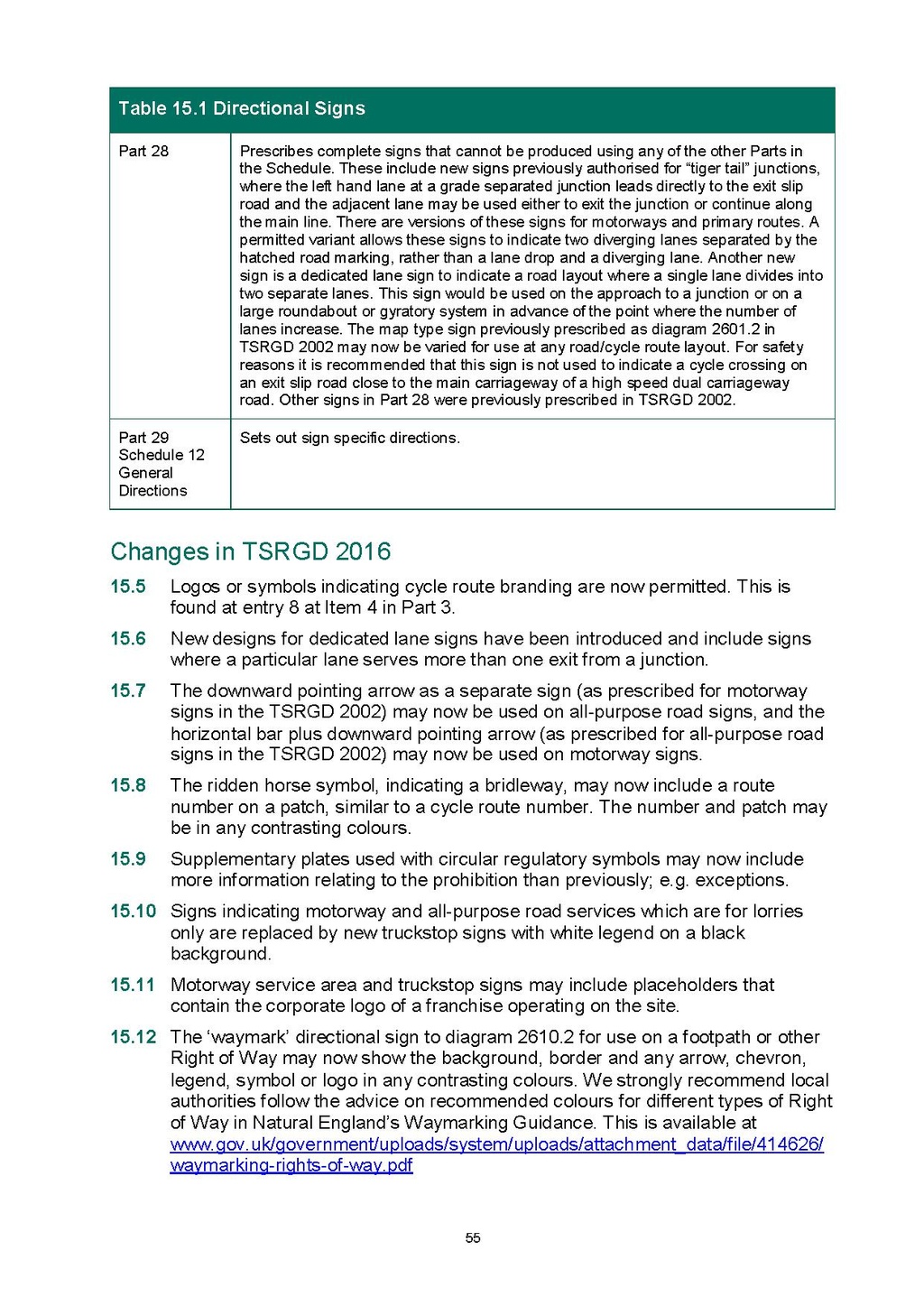| Part 28 | Prescribes complete signs that cannot be produced using any of the other Parts in the Schedule. These include new signs previously authorised for "tiger tail" junctions, where the left hand lane at a grade separated junction leads directly to the exit slip road and the adjacent lane may be used either to exit the junction or continue along the main line. There are versions of these signs for motorways and primary routes. A permitted variant allows these signs to indicate two diverging lanes separated by the hatched road marking, rather than a lane drop and a diverging lane. Another new sign is a dedicated lane sign to indicate a road layout where a single lane divides into two separate lanes. This sign would be used on the approach to a junction or on a large roundabout or gyratory system in advance of the point where the number of lanes increase. The map type sign previously prescribed as diagram 2601.2 in TSRGD 2002 may now be varied for use at any road/cycle route layout. For safety reasons it is recommended that this sign is not used to indicate a cycle crossing on an exit slip road close to the main carriageway of a high speed dual carriageway road. Other signs in Part 28 were previously prescribed in TSRGD 2002. |
| Part 29 Schedule 12 General Directions |
Sets out sign specific directions. |
Changes in TSRGD 2016
15.5
Logos or symbols indicating cycle route branding are now permitted. This is found at entry 8 at Item 4 in Part 3.
15.6
New designs for dedicated lane signs have been introduced and include signs where a particular lane serves more than one exit from a junction.
15.7
The downward pointing arrow as a separate sign (as prescribed for motorway signs in the TSRGD 2002) may now be used on all-purpose road signs, and the horizontal bar plus downward pointing arrow (as prescribed for all-purpose road signs in the TSRGD 2002) may now be used on motorway signs.
15.8
The ridden horse symbol, indicating a bridleway, may now include a route number on a patch, similar to a cycle route number. The number and patch may be in any contrasting colours.
15.9
Supplementary plates used with circular regulatory symbols may now include more information relating to the prohibition than previously; e.g. exceptions.
15.10
Signs indicating motorway and all-purpose road services which are for lorries only are replaced by new truck-stop signs with white legend on a black background.
15.11
Motorway service area and truckstop signs may include placeholders that contain the corporate logo of a franchise operating on the site.
15.12
The 'waymark' directional sign to diagram 2610.2 for use on a footpath or other Right of Way may now show the background, border and any arrow, chevron, legend, symbol or logo in any contrasting colours. We strongly recommend local authorities follow the advice on recommended colours for different types of Right of Way in Natural England's Waymarking Guidance. This is available at www.gov.uk/government/uploads/system/uploads/attachment_data/file/414626/waymarking-rights-of-way.pdf
55
